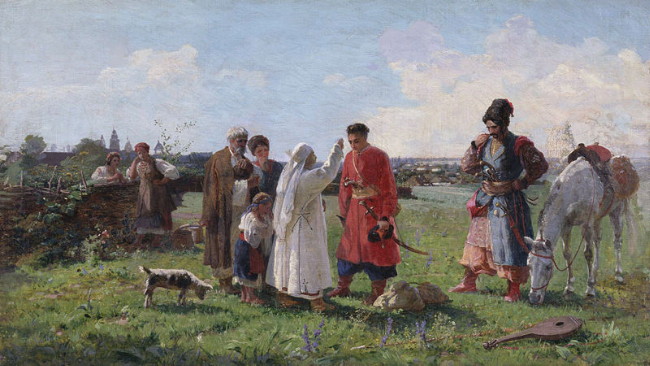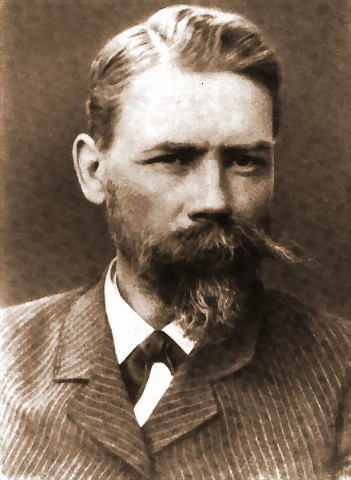Slastion, Opanas
Slastion, Opanas [Сластіон, Опанас; Slast’on] (Slaston, pseud: Opishnianskyi Honchar), b 14 January 1855 in Berdiansk, Tavriia gubernia, d 24 September 1933 in Myrhorod, Poltava okruha. Painter, illustrator, architect, art scholar, ethnographer, and kobzar. After graduating from the Saint Petersburg Academy of Arts (1882) he worked as an artist for the Ministry of Defense in Saint Petersburg (1887–1900), where he was able to study materials on the Ukrainian Cossacks, and presided over the Ukrainian Club in the capital (1897–1900). In 1883–5 he did 55 pen drawings for the 1886 Saint Petersburg edition of Taras Shevchenko's epic poem ‘Haidamaky.’ His genre paintings and landscapes were reproduced frequently in the journals Niva and Zhivopisnoe obozrenie, and he contributed sketches to Zoria (Lviv) and to satirical magazines, such as Shershen’, Oskolki, Strekoza, and Shut. From 1900 to 1928 he taught at the Myrhorod Arts and Crafts School and created illustrations for more of Shevchenko's poems. Slastion's articles were published in periodicals such as Kievskaia starina, Ridnyi krai, Rada (Kyiv), and Siaivo.
For many years Slastion wandered about Ukraine, painting landscapes, such as Myrhorod (1901) and Evening: Village (1904), drawing architectural monuments, collecting folklore and folk art, and writing down the folk songs and historic songs performed by kobzars (later used by Filaret Kolessa in his two volumes of materials on Ukrainian ethnology, 1913). He became a skilled performer of Cossack dumas on the bandura. His gallery of kobzars in Left-Bank Ukraine, drawn from 1875 to 1928, was not published until 1961. From the ethnographic materials Slastion collected he prepared albums on Ukrainian and Zaporozhian antiquities (his lithographs of the mid-1890s perished in a flood in 1900), folk dress, folk ornaments, embroidery, wood carvings, ceramics, and architecture. He supported Vasyl H. Krychevsky's architectural design of the Poltava Zemstvo Building in the Ukrainian ‘folk’ style, and in 1910–13 he designed dozens of village public buildings in that style (eg, in Velyki Sorochyntsi). Slastion prepared the materials for a book of Ukrainian folk dumas (1927) and wrote recollections about his friend Porfyrii Martynovych (1931). In 1920 Slastion founded the Myrhorod Regional Studies Museum, to which he donated his valuable collection of historical and ethnographic materials, and in 1928 he organized the first peasant banduryst chorus. A biography of Slastion by A. Abbasov was published in Kyiv in 1973, and a catalog of a retrospective exhibition of his works appeared in 1975.
[This article originally appeared in the Encyclopedia of Ukraine, vol. 4 (1993).]
.jpg)

.jpg)
.jpg)
.jpg)
.jpg)

.jpg)
.jpg)